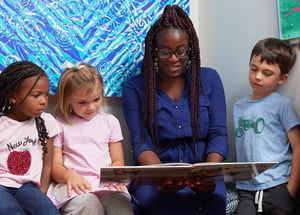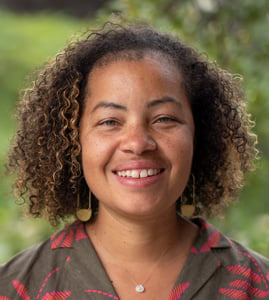 When I was younger, as a child of color in a household with parents who were also of color, talking about race was so common I don’t remember a time when we didn’t talk about it. I remember feeling proud and empowered about my racial identity. When I was faced with discrimination or hurtful stereotypes, even though it was painful, the foundation my parents helped create allowed me to talk about the experience knowing that I was more than a stereotype.
When I was younger, as a child of color in a household with parents who were also of color, talking about race was so common I don’t remember a time when we didn’t talk about it. I remember feeling proud and empowered about my racial identity. When I was faced with discrimination or hurtful stereotypes, even though it was painful, the foundation my parents helped create allowed me to talk about the experience knowing that I was more than a stereotype.
I knew that I could find support at home, but it was hard to talk with my white friends about these incidents. They rarely, if ever, had similar conversations at home. Their lack of ability to talk about race made it almost impossible to have a productive or restorative conversation.
For many families with children of color, talking about race and how racial identity impacts their child’s experience in the world is as common as talking about friendship or homework. It goes hand-in-hand with other important conversations about independence and development. As Dean of Diversity and Inclusion at a pre-K through 12th grade school, I hope to encourage all families to talk about race. Perhaps we can change our ways to empower children of all colors to be able to talk and share their experiences, both negative and positive, with more ease and understanding.
Here are some things to keep in mind:
- Have intentional conversations about race in positive ways. We all have a racial identity; talk about yours.
- Teach your children about individuals who have worked as allies to further racial justice.
- Anchor your children’s identity, white or non-white, as a supportive ally to dismantle racism.
- Talk about how race and racism structurally affect people of color in negative ways. Be honest about the past and the privileges that come to those who are white so that we can work towards changing the future.
- Expose your children to all kinds of people in real life, through relationships, and in books that illustrate stories beyond stereotypes. These examples should show people of color and white people in all kinds of roles and experiences. Here are some to get you started.
- Instead of teaching children to “be color-blind,” recognize that many different races and ethnicities make our communities more creative and vibrant places. Expose your family to the richness of diversity in celebration.
No matter how or where you do it, I encourage you to start the conversation with your family and learn about the diversity within our communities near and far.



